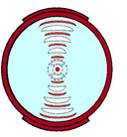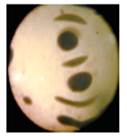Acoustic radiation force for rapid detection of particles in biological liquids
Lev Ostrovsky -- lev.a.ostrovsky@noaa.gov
Zel Technologies and
University of Colorado,
325 Broadway
Boulder, Colorado 80305
Aba Priev
Yechezkel Barenholz
Biochemistry Dept.
Hebrew University-Hadassah Medical School
Jerusalem, Israel
Popular version of paper 3aBA2
Presented Wednesday morning, November 2, 2011
162nd Meeting of the Acoustical Society of American, San Diego, Calif.
Real-time monitoring of water contaminants is an essential component in the security and safety of any potable or reclaimed water system. The more we understand the risks from pathogens and toxins posed by water recycling, the stronger confidence the public will have in its acceptance. In this presentation we describe a novel ultrasonic technology for water quality monitoring. Our approach is to reduce uncertainty through the use of multiple indicators (i.e. specific gravity, turbidity, salinity, gases and microbes) for better understanding of what are the types and concentrations of contaminants in water. For rapid identification of bacteria (for example, Escherichia coli and Salmonella typhi) we developed ahigh-speed (30-40 seconds) ultrasonic immunoassay method by combining concentration of pathogenic particles by the acoustic radiation force (RF) defined as a period-average force acting on a particle, which pushes the particles to the peaks of acoustic pressure, with quantitative monitoring of amount of pathogenic particles by precise sound velocity and sound absorption measurements.
Theoretical calculations of RF acting on the suspended bacteria in the cylindrical ultrasonic chamber show that the main maximum of the force dragging a particle to the central node can exceed the force maximum at the periphery of the chamber by about 50 times. Radiation force in the cylindrical standing acoustic wave field may induce movement of bacterial cells with a speed of the order of a few mm/s at a frequency of 2 MHz and ultrasound pressure amplitude of 100 kPa, whereas the speed of bacteria in the commonly used plane standing wave does not exceed 0.1 mm/s under the same conditions. Since the response time is critical, real-time monitoring is much more effective than physical sampling-based-monitoring with a typical sample collection period of 24 hours. Ultrasonic detection of the presence of an indicator microorganism, such as E. coli, in drinking water can be made significantly more efficient by the aforementioned enrichment procedure using cylindrical standing waves.
There are many other potential commercial applications for low-cost and low-maintenance ultrasonic technology. To name a few:
- Rapid identification of Anthrax, Botulinum Toxin, and other biological agents in air and soil.
- Food quality evaluation: dairy, beer, breweries, wineries, soft drinks, edible oils, etc.
- Biochemicals point-of-care: on-site tests for blood, urine, saliva and other biological and pharmaceuticals fluids.


Left: schematic pattern of a standing ultrasonic wave in a cylindrical cell with concentration in the center (dark and light serpents show the peaks and nodes of pressure, respectively). Right: photo of a cell with milk separating fat (round, “fatter” spots) and somatic (harmful) cells (thinner serpents).
[ Lay Language Papers Index | Press Room

